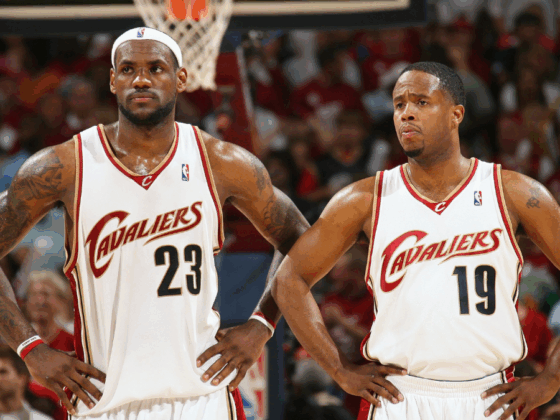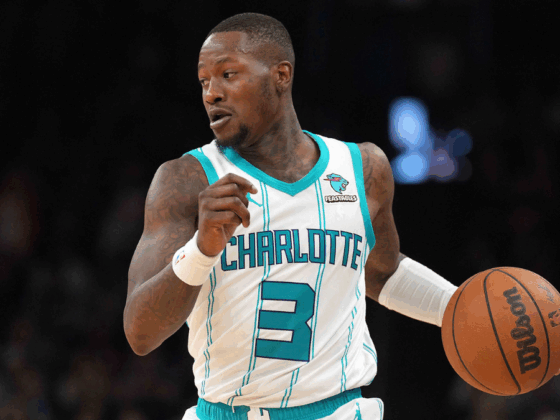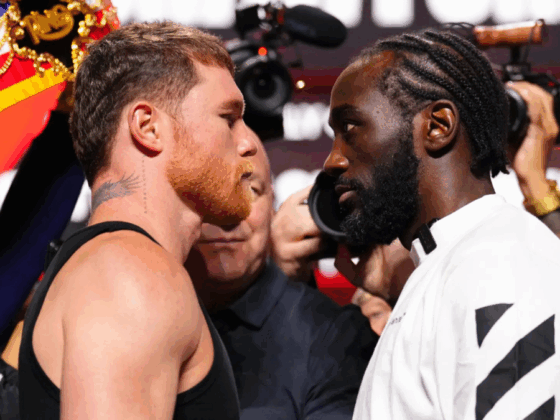
Much has been made of the Toronto Raptors’ radically different offensive philosophy this season — and rightfully so. Their stars, Kyle Lowry and DeMar DeRozan, are less dependent on isolation sets and inefficient shots. They’re moving the ball more and are less predictable than season’s past — when their schemes were as calculable as the turn of the calendar. Role players have been entrusted with — and stepped into — increased opportunities. All those components are factors in why Toronto appears better constructed for the postseason.
But what’s been overshadowed or accompanied by those alterations is the Raptors’ versatile, youthful and weaponized bench unit — whose plus-7.7 net rating ranks only second to Golden State.
Toronto’s reserves are playing 20.4 minutes per game, the most of any Raptors’ team during the Dwane Casey era. That plus-7.7 mark is also the best net rating under Casey.
That’s not to say Toronto’s bench over the past few seasons was bad — it wasn’t. It still ranked among the top 10 in net rating, but it was led by low-ceiling veterans such as Patrick Patterson, Corey Joseph, PJ Tucker and Amir Johnson — none of whom projected to be part of the Raptors’ long-term plans.
Of the six reserves playing at least 15 minutes per night up North — five of whom are 25 or younger — none have entrenched themselves in Sixth Man of the Year discussions, which stems from the egalitarian nature of the platoon — every 15-plus-minute substitute attempts between 4.7 and 8.2 shots per game.
With the majority of Toronto’s individual firepower rooted in its starting five, off-ball movement, screens, dribble-drives and passing are staples of the bench’s success:
The number of passes in that clip mirrors the chance Brooklyn had of thwarting a play where the ball moves so quickly and fluidly: zero.
Each player knows their role and rarely steps outside of those confines. Delon Wright leads the charge as a lanky, pestering defender whose length wreaks havoc, catalyzing transition opportunities — where he scores 1.43 points per possession (94th percentile), per Synergy. At 6 feet 5 inches, the former Utah Ute already holds a considerable advantage over opposing guards, despite a pedestrian (for his size) 6-foot-7 wingspan.
Wright wriggles around screens and uses his reach to poke the ball free or alter shots. In the open court, his herky-jerky body contortion and slithery Eurosteps serve as a Calculus test for defenders left behind in Geometry:
Alongside Fred VanVleet, Wright slots in at shooting guard, but shares ball-handling duties with his backcourt mate. In the pick and roll, the third-year guard produces 1.10 PPP (95th percentile), per Synergy. He lacks the explosive speed to dart inside but harnesses his forward-like ambit for crafty scoop shots and floaters.
A disciple of the Daryl Morey School of Efficiency, Wright has attempted just six midrange shots this season while scoring at a remarkably efficiently 67.4 percent mark inside the restricted area.
VanVleet, meanwhile, is zippy, shifty and deceptively strong — oh, and he’s hitting 37.4 percent of his 3-pointers. He blindsides defenders with a wicked crossover, recognizes angles and can finish around the rim with either hand:
The VanVleet-Wright pairing, which has bred a 106.2 offensive rating and 97.0 defensive rating in 298 minutes this season, finds success, in part, because of Wright’s growing improvements as a shooter, allowing him to play off-ball. While his 33.9 percent mark from 3 screams mediocre, he’s rebounded from a 2-for-19 showing in October. Since then, Wright is 18 for 40 in 22 games — shooting and making enough to keep defenses honest and stretching the floor for the rest of Toronto’s potent bench squad, particularly VanVleet, who blitzes to the paint and creates points:
Wright’s man, Josh Hart, decides to sacrifice a (seemingly) contested 2 rather than an open 3 and doesn’t cut off VanVleet’s lane to the basket, empowering the 5-foot-11 guard to make a wraparound pass to Jakob Poeltl for an easy 2.
Defensively, VanVleet is tenacious with quick hands. His diminutive stature will always limit his ability to contest shots near the basket, but with an insistent motor and high basketball IQ, VanVleet is a plus defender at the point of attack for Toronto (97.4 DRtg, fourth in the NBA). Aiding his defensive outlook is the tutelage of Lowry, who, with a similar build, is also a bulldog-like defender.
Both Poeltl and Pascal Siakam are shooting over 71 percent at the rim this season. When the guards and wings attack off the dribble, defenders can’t abandon those two. With a pair of playmaking guards, a marksman in C.J. Miles and two efficient rim runners — with sharp off-ball instincts — the Raptors’ bench is more well-rounded than a middle school honor student.
As a shooter, Wright is increasingly dangerous from 3-point range when partnering with three cogs in the Raptors’ bench artillery. On passes from Siakam, Poeltl and VanVleet, Wright is shooting 42.9 percent (Siakam) and 37.5 percent (VanVleet and Poeltl) from 3.
Wright plays the most minutes of any Raptor reserve and can thrive at either guard position, which serves as a tremendous boon and embodies the bench’s positional versatility.
Toronto’s wings, Miles, Wright and Siakam, are capable of guarding two, sometimes three, positions, which lends itself to yielding success against diverse roster constructions — highlighted by the third-best bench DRtg (100.2).
Those switch-heavy, rangy bench lineups lead the NBA in steals per game (4.3) and rank second in blocks (3.2), enabling their league-best 9.2 points off turnovers:
In half-court sets, Toronto’s bigs sink off incoming ball handlers and encourage inefficient midrange jumpers, holding opponents to 44.2 percent shooting from the field (seventh-best league-wide):
Poeltl has improved as a defensive anchor this season, shrinking his per-36 foul rate from 6.5 to 5.3, allowing a lesser portion of made shots within six feet and snagging more contested rebounds, per NBA.com. His presence inside permits the wings to funnel action toward the paint as Poeltl lurks, waiting to alter or block shots — without fouling — and secure the board.
Increased run for the young pups has allowed Lowry and DeRozan to shoulder fewer responsibilities this season. Lowry is playing the second-fewest minutes of his six-year tenure in Toronto with his lowest usage rate since 2012-13 while DeRozan is averaging the fewest minutes since his rookie season and has seen his usage rate drop four percent from last year. Both ranked in the top 20 for minutes per game four consecutive seasons, yet this year, each is absent from such a list.
Come playoff time, as rotations grow thin and the talent level increases, Toronto’s spry and nimble bench unit won’t constantly run wild. But for a team whose stars have traditionally folded like a poorly pitched tent in April and beyond, betting on a revitalized and refreshed Lowry and DeRozan, while sparking the development of their future, is shrewd.
The Raptors’ dominant bench unit, commandeered by four players 25 or younger, has the makings of a core whose development follows a similar career arc. Toronto’s 2017 first-round pick, O.G. Anunoby, who opened the season as a reserve, usurped the struggling Norman Powell in the starting lineup and spasmodically indicates at signs of a Kawhi-like ceiling.
Amid the disappointing playoff showings, the Raptors have rebounded to nail draft picks just weeks later. And after their latest playoff debacle, Toronto opened up the offense, shipped out aging depth and handed its spare keys to players whose driver’s licenses were still fresh.
Yet even then, it still may not produce the desired results. When the pressure mounts, Lowry and DeRozan may revert back to their ways of yesteryear, playing a style of ball they’ve grown accustomed to in their careers; the youngsters may wither under the lights; Casey may abandon faith in those players; the youthful pieces may never ascend to anything more than role players down the road.
But they say the definition of insanity is doing the same thing over and over while expecting different results. In four consecutive postseasons, Casey and the Raptors epitomized that concept. But this offseason, Casey checked into an insane asylum and emerged with a cure that might just guide Toronto to uncharted heights this season and circumvent the grim post-Lowry-DeRozan Era that seemed potentially imminent this summer.
All stats and videos via Basketball-Reference, NBA.com and 3Ball unless otherwise noted and are accurate as of Jan. 11.






